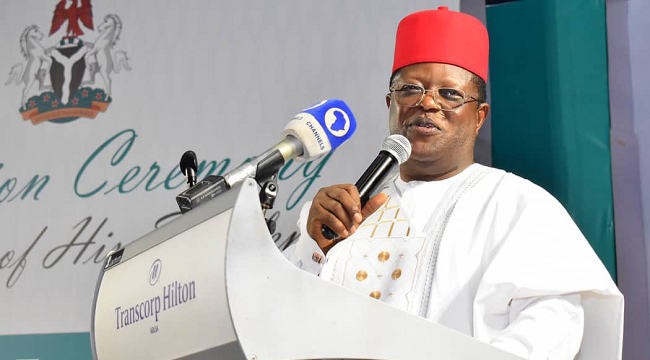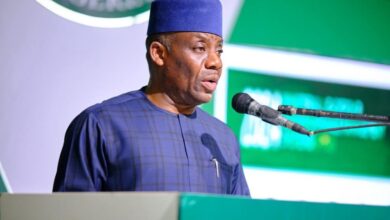N7.5 Billion-Per-Kilometer Cost Justified for Coastal Highway, Says Minister

Umahi Justifies N7.5 Billion-Per-Kilometer Cost, Cites Concrete Quality and International Review.
Minister of Works, Dave Umahi, has vigorously defended the controversial cost of the Lagos-Calabar Coastal Highway project, asserting that the N7.5 billion per kilometer figure for a standard two-lane equivalent is justified by the specialized nature of the construction and the use of concrete.
Addressing journalists, Umahi disclosed that the first section of the ambitious 700-kilometer coastal road, which spans 47.47 kilometers and features six lanes, is estimated to cost N1.067 trillion.
The Minister argued that the N7.5 billion per-kilometer calculation is derived by dividing the total cost of the six-lane segment, and then converting the figure to the standard two-lane measurement used for federal highways.
”The first section, 47.47 kilometers, is costing ₦1.067 trillion and is six lanes,” Umahi explained. “When you divide this ₦1.067 trillion by 47.47 and by two, you will get 11.57—a kilometer of three lanes. A standard federal highway is two lanes. So by the time you now divide by three and multiply by two, you will see that a standard coastal road is going for ₦7.5 billion per kilometer.”
Umahi emphasized that this price is comprehensive, covering construction necessities such as extensive shore protections, solar lighting throughout, and concrete retaining walls. He also highlighted the challenging terrain, noting the construction team “encounter[s] a pit of up to 20 meters,” which must be excavated and refilled before concrete laying.
Furthermore, the Minister stated that the project’s cost had been reviewed and approved by international financial institutions, including the Dutch bank that led the review. According to Umahi, these institutions described the project as “undervalued.”
”The Dutch bank that led the other international banks to review the cost of the project said it was undervalued,” he said, adding that the project’s 70% loan component was oversubscribed by 100 million U.S. dollars.
Umahi stressed that the government’s decision to use reinforced concrete, compared to previous administrations’ asphalt-based projects, ensures the road’s longevity and cost-effectiveness. He challenged critics to “be very objective and tell the public the truth.”





